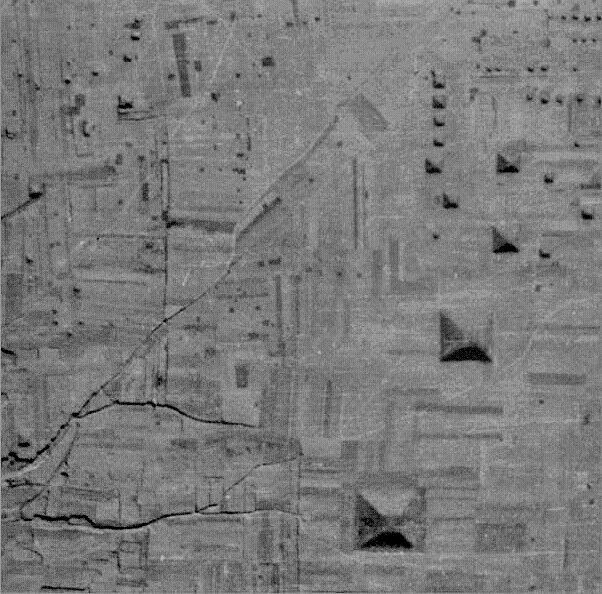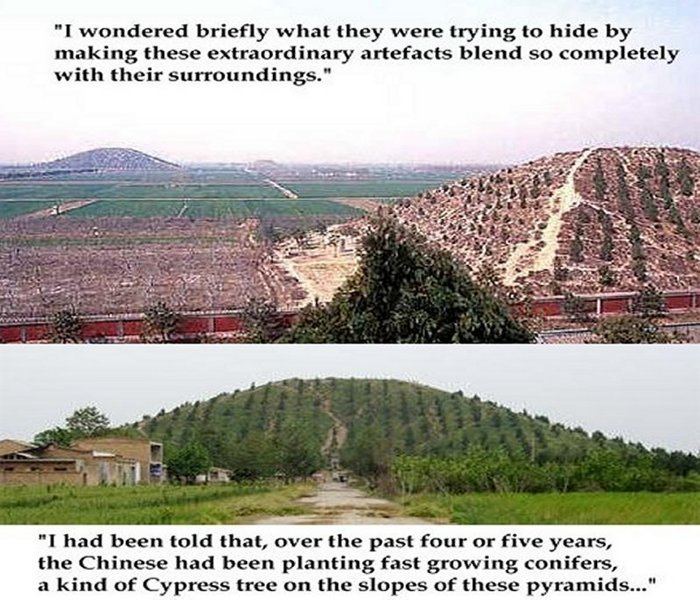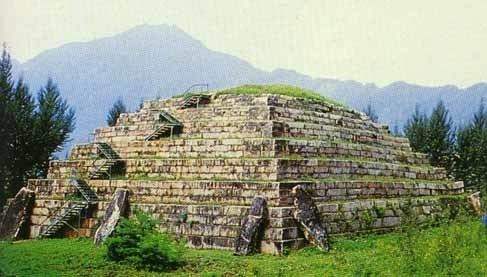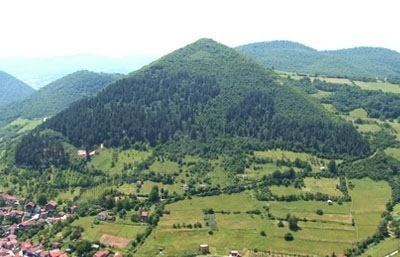 | ||
Similar White Pyramid, Maoling, Mausoleum of the First Qin Empe, Terracotta Army, Mount Li | ||
The chinese pyramids and the white giant mummies are considered a national secret in china
The term Chinese pyramids refers to pyramidal shaped structures in China, most of which are ancient mausoleums and burial mounds built to house the remains of several early emperors of China and their imperial relatives. About 38 of them are located around 25 kilometres (16 mi) - 35 kilometres (22 mi) north-west of Xi'an, on the Qin Chuan Plains in Shaanxi Province. The most famous is the Mausoleum of the First Qin Emperor, northeast of Xi'an and 1.7 km west of where the Terracotta Warriors were found.
Contents
- The chinese pyramids and the white giant mummies are considered a national secret in china
- Earliest tombs
- Information available in the West
- Sensational claims
- Zhou dynasty tombs complex near Luoyang Henan
- Zhao Kings tombs complex near Handan Hebei
- Yan Kings burial mounds in Yixian Hebei
- Qin dynasty mausoleums near Xian Shanxi
- Western Han dynasty mausoleums complex in Xianyang and around Xian Shaanxi
- Yangling Shaanxi
- Xining Qinghai
- Tang dynasty mausoleums in Shaanxi
- Mausoleum of Emperor Xiaojing of Tang near Goushi Henan
- Elsewhere
- References

Although known in the West for at least a century, their existence has been made controversial by sensationalist publicity and the problems of Chinese archaeology in early 20th century.

Earliest tombs
The earliest tombs in China are found just north of Beijing in the Inner Mongolia Autonomous Region and in Liaoning. They belong to the Neolithic Hongshan culture (4700 to 2900 BC).
The site of Niuheliang in Liaoning contains a pyramidal structure.
Information available in the West
In 1667 the Jesuit Father Athanasius Kircher wrote about Chinese pyramids in his book China monumentis Illustrata.

The existence of "pyramids" in China remained little known in the Western world until the 1910s. They were documented in large numbers around Xian, first in 1912 by the Western traders Fred Meyer Schroder and Oscar Mamen, and also in 1913 by the expedition of Victor Segalen. He wrote about the First Emperor's tomb, and about the other mound tombs in the region in his Mission Archeologique en Chine (1914): L'art funéraire à l'époque des Han.
Sensational claims
The introduction of pyramids in China to popular attention came soon after World War II. Many early stories were focused on the existence of a "Great White Pyramid" (Maoling). This is the tomb of Emperor Wu of Han (156–87 BCE) located in Xingping, Shaanxi Province.
U.S. Army Air Corps pilot James Gaussman is said to have seen a white jewel-topped pyramid during a flight between India and China during World War II. Colonel Maurice Sheahan, Far Eastern director of the Trans World Airline, told an eyewitness account of his encounter with a pyramid in the March 28, 1947 edition of The New York Times. A photo of Sheahan's pyramid appeared in The New York Sunday News on March 30, 1947. This photograph later became attributed to James Gaussman.
Chris Maier showed that the pyramid in the photo is the Maoling Mausoleum of Emperor Wu just outside Xi'an. Pseudohistorians, through promoting their theories, have increased western awareness of these pyramids. Hartwig Hausdorf speculated it was built by aliens, and Philip Coppens repeated this theory.
Despite claims to the contrary, the existence of these pyramid-shaped tomb mounds was known by scientists in the West before the publicity caused by the story in 1947. Shortly after the New York Times story, Science News Letter (now Science News) published a short item saying: "The Chinese pyramids of that region are built of mud and dirt and are more like mounds than the pyramids of Egypt, and the region is little travelled. American scientists who have been in the area suggest that the height of 1,000 feet (300 m), more than twice as high as any of the Egyptian pyramids, may have been exaggerated, because most of the Chinese mounds of that area are built relatively low. The location, reported 40 miles (64 km) southwest of Sian, is in an area of great archaeological importance, but few of the pyramids have ever been explored."
Some of the pyramids of Xi'an are currently tourist attractions, such as for example the Han Yang Ling Mausoleum of the Western Han Dynasty, and several of them have museums attached to them.
Zhou dynasty tombs complex near Luoyang, Henan
Zhao Kings' tombs complex near Handan, Hebei
Yan King's burial mounds in Yixian, Hebei
Qin dynasty mausoleums near Xi'an, Shanxi
Western Han dynasty mausoleums complex in Xianyang and around Xi'an, Shaanxi
Pingling Mausoleum group:
Yanling Mausoleum group:
Kangling Mausoleum group:
Weiling Mausoleum group:
Group of two "tombs of Zhou Kings" (possibly from Han era):
Yiling mausoleum group:
Anling mausoleum group:
Changling mausoleum group:
Yangling mausoleum group:
Baling mausoleum group:
Duling mausoleum group:
